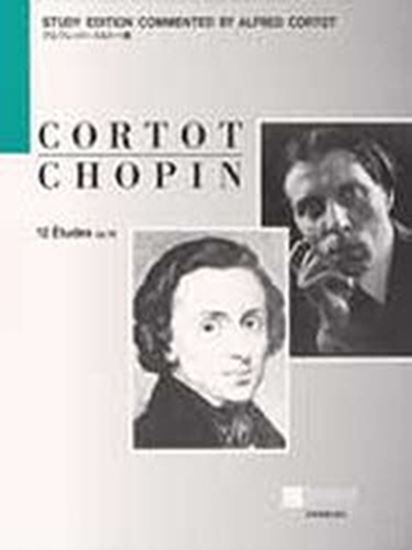Chopin, Frederic : 12 études Etude No.9 f-moll Op.10-9
Work Overview
Genre:etude
Total Playing Time:2 min 30 sec
Copyright:Public Domain
Commentary (2)
Author : Imazeki, Shiori
Last Updated: August 7, 2019
[Open]
Author : Imazeki, Shiori
Composed between 1830 and 1832.
The autograph manuscript is housed in the Fryderyk Chopin Museum in Warsaw (accession number M/196).
F minor, 6/8 time, Allegro molto agitato
Among Chopin's Études Op. 10, which predominantly focus on developing right-hand virtuosity, this piece is one of the few dedicated to the left hand. The challenge lies in the left hand's arpeggiated accompaniment figures in sixteenth notes. These left-hand arpeggios include notes for the little finger and thumb that are more than an octave apart, thus requiring the 2nd, 3rd, and 4th fingers to act as a pivot, and demanding flexibility in the wrist and elbow for lateral movement. The right-hand melody appears awkwardly, starting on the off-beat of the first beat, progressing stepwise in a fragmented manner interspersed with eighth rests, and then featuring a disjunct progression that continues for three measures.
The middle section (from measure 17) becomes tonally unstable due to a succession of borrowed chords, leading to an increase in tension and passion.
Author : Ooi, Kazurou
Last Updated: March 12, 2018
[Open]
Author : Ooi, Kazurou
No. 9 in F minor
It is crucial to remember that this etude is marked molto agitato. When the downbeat (or strong beat) is a rest, the music can become very agitato. The absence of a note where one would normally expect it creates a highly unsettled feeling. In measure 1, both the first and second beats begin with an eighth rest. Let's try shifting the melodic line, F-G A♭-B, to the left so that it starts on the beat, placing the eighth rests at the end of each beat. Although this would clash with the left-hand notes, with some ingenuity, it could still form a piece, but it would likely not sound as unstable. However, Chopin deliberately places rests at the beginning of the beats, creating an expression of profound unease. Therefore, it is essential to understand that the entire piece must be performed with great agitato.
- In measure 1, for the slurred pairs of eighth notes, stress the first note and release the second. Ensure the second note does not receive an accent.
- In measure 1, ensure that the second beat is louder than the first, and the first beat of measure 2 is louder still, building tension with a crescendo while maintaining the aforementioned order of the two notes.
- Assuming a phrase begins in measure 1 and ends in measure 4, the highest note in this phrase is A♭ in measure 2; however, do not emphasize it. Instead, direct the sound towards the final melodic note, C, in measure 4, making C the loudest. In the second phrase, from measure 5 to measure 8, the A♭ on the first beat of measure 8 will be the loudest. Subsequent identical phrases should follow the same dynamic direction.
- When leaping from C to A♭ on the second beat of measure 2, take a minuscule amount of time, almost imperceptible to the listener. The same applies when leaping from C to the octave C on the second beat of measure 6.
- Performers must be cautious when the melodic line becomes octaves, as in measure 25. It tends to sound harsh. Half the force of a single melodic line is sufficient. Furthermore, avoid creating two octaves with the exact same volume.
- In measure 29, there are four D♭s in the melody. Direct the sound towards the fourth D♭. In this case, too, ensure that the four D♭s do not have the same volume; identical notes are particularly noticeable. Apply this principle similarly thereafter.
- A prime example of sounding harsh is the right hand in measure 35. Even if marked forte, do not start at full forte; instead, direct the sound towards the final C. Here, too, never raise the volume excessively, and avoid creating two octaves with the exact same volume.
- Pay particular attention to the volume of the long phrase beginning in measure 53 and extending to D♭ in measure 56. If you start with too much volume, there will be no room for further development.
- In measure 1, a challenge for the performer is the left hand's leap from C to D♭ on the second beat. Since D♭ is a distant reach, ensure that D♭ sounds clearly. Subsequently, pay attention to all wide reaches.
PTNA & Partner Channel Videos(4items)
Sheet Music
Scores List (16)

(株)全音楽譜出版社

(株)全音楽譜出版社

(株)全音楽譜出版社

ジェスク音楽文化振興会

(株)全音楽譜出版社

ヘンレー

ヘンレー

ヘンレー

ジェスク音楽文化振興会

(株)全音楽譜出版社

ヘンレー

ポーランド音楽出版社

(株)ヤマハミュージックエンタテインメントホールディングス

ロケットミュージック

(株)音楽之友社








